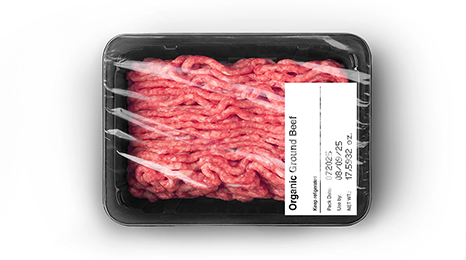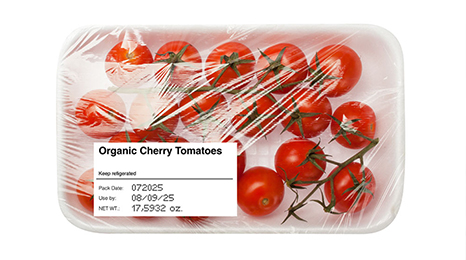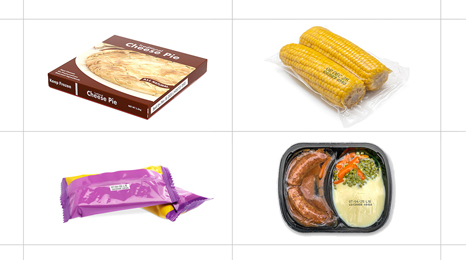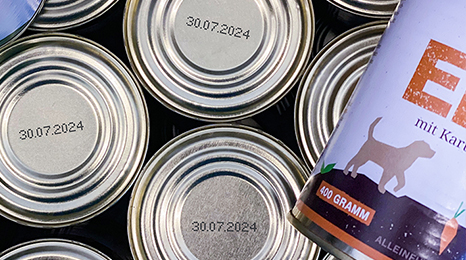Challenges of the meat industry
The meat and meat-processing industry is currently dealing with a number of diverse challenges. Being the largest individual sector within the food industry, it is of prime importance. Nonetheless, meat consumption per capita in Germany has been in constant decline since around 2018. Lower production figures have inevitably directed attention towards the productivity and simplification of various stages of the production process.
Packaging processes are being automated, production speeds increased and the efforts being made to avert production stoppages are unprecedented. An important step in this respect is the selection of efficient packaging and marking technologies. These applied technologies also need to be flexible enough to adapt to ever-changing production requirements. Examples being the packaging of different types of meat, cutting styles and cut sizes as well as specific customisation wishes or market trends.
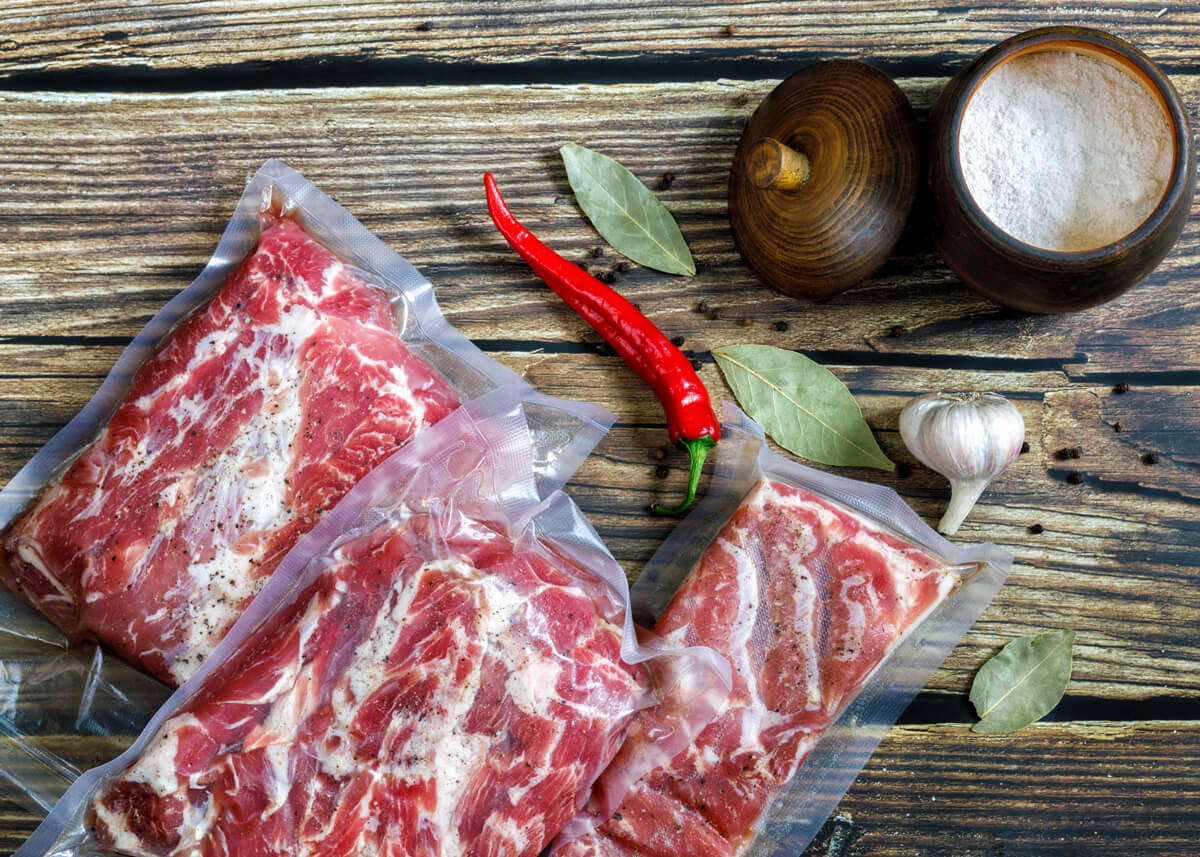
Variable coding
Legally required coding & marking is divided into static and variable codes. Static codes include the specification of nutritional values and allergies as well as producer details and QR codes for marketing purposes. Static information is generally printed onto the label or directly onto the packaging.
Variable codes are dynamic and ever-changing. Commensurate examples include processing and best-before dates, exact packaging time details, batch numbers and also variable data stemming from upstream systems, such as net and gross weights from product weighing machines and pricing information. In contrast to static codes, the application of variable coding must be integrated into the production process and needs to be as economical as possible.
Yet in addition to ‘what’, the factor ‘on what’ also plays an inherent role. In other words, the packaging materials that are to be marked. The situation at the moment is fluid. Consumers are calling for increasingly more sustainable products. Commensurate provisions and regulations have either already been implemented or are in the throes of legislative procedure. Major drivers in this respect are the use of environmentally-friendly materials and the reduction of waste packaging. The recommendation from an industry perspective when it comes to coding & marking systems is to focus on a high degree of flexibility.
Coding technologies used in the meat industry
Three coding & marking systems are commonly used in the meat industry for applying variable marking:
Thermal Transfer Overprint (TTO)
This technology is frequently used to mark flexible packaging. TTO is often deployed in vertical or horizontal filling machines. The printing process is not contactless. TTO systems feature a print head that heats the product area to be printed and transfers it onto the designated printing area via a thermal transfer ribbon. Extremely crisp lettering can be produced using TTO.
Laser technology
Carbon dioxide (CO2) lasers are a commonly used laser in packaging applications. These lasers operate at a wavelength of between 9.3µm and 10.6µm. Marking generally occurs through ablation of the surface. No other media is required for marking when using this technology. Laser operation generates significant costs in terms of procurement and safety aspects. The printing quality is excellent.
Continuous inkjet (CIJ) printer
In an inkjet printer, the flow of ink is formed into droplets by a transducer element. These droplets are then electrically charged. The charged droplets are guided onto the product producing precise characters. All unguided droplets are returned to the system.
CIJ technology is by far the most common coding & marking technology; and for good reason, it is cost-effective and can be universally applied. Here a summary of the pros and cons of the various technologies.
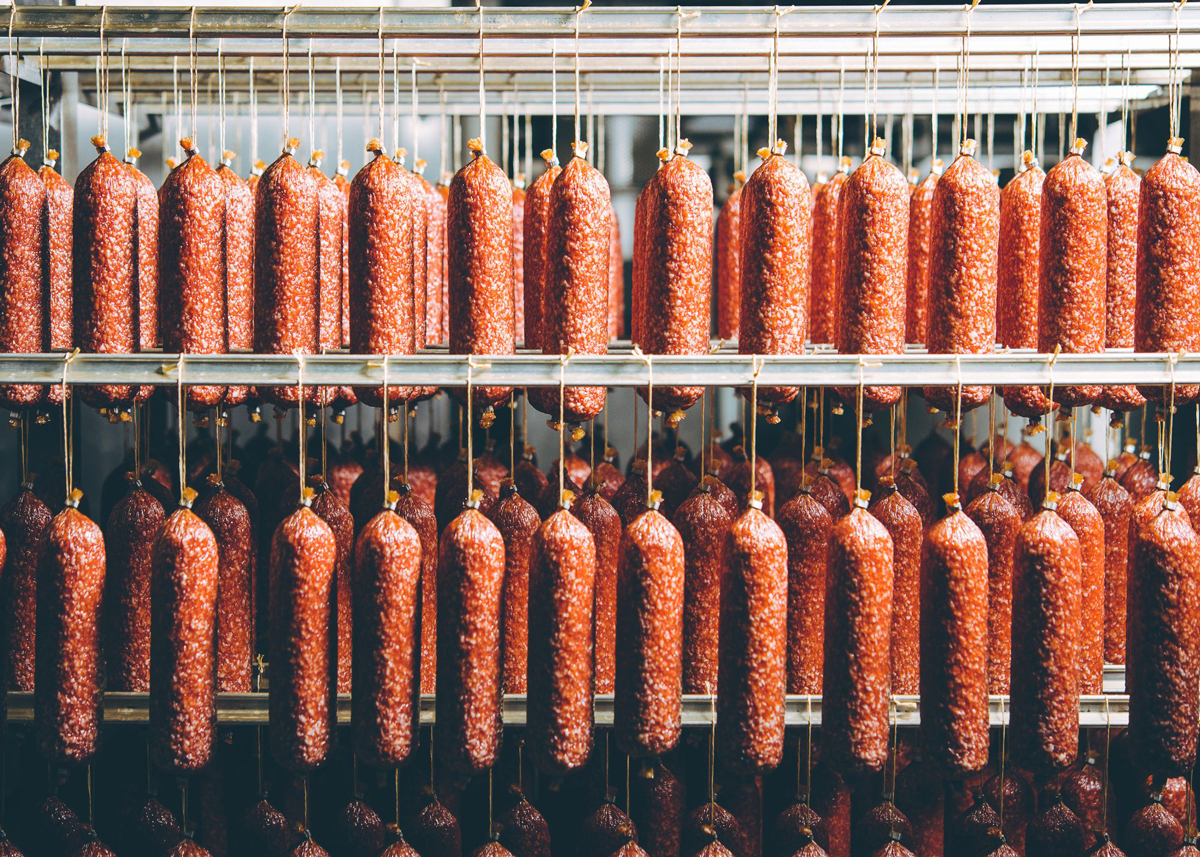
Continuous inkjet versus Thermal Transfer Overprint
The advantage of the continuous inkjet (CIJ) printer, also known as the small character printer, is its versatility. CIJ printers are suitable for almost any surface and material.
In comparison, the selection of printable materials for thermal transfer overprint (TTO) printers is limited. TTO printers are mainly used to print film that is precision guided and pulled over a roller. To transfer the ink from the ribbon to the packaging film during the marking process, TTO printers require counter-pressure from the film and a flat surface.
Such pressure is not required by CIJ printers as coding & marking is contactless, which explains their versatility in terms of materials, ranging from films and plastics to cardboard boxes, glass and even canned goods. Ink is applied to all surfaces and shapes from a distance of up to 20mm.
Continuous inkjet versus laser
Laser printers do not apply any ink or toner to packaging, but instead actively transform the surface of the packaging material through exposure to the laser energy. Laser technology has the advantage of not requiring any consumables. However, from a long-term perspective and depending on the type of laser, it should be noted that the beam source may well expire in time and will have to be completely replaced, an extremely costly affair.
Integration of a laser printer is more complex than integration of a CIJ printer. Whereas a CIJ printer only requires the integration of a small print head into the production line, the installation of a laser printer needs supplementary peripheral equipment. The vapours created by the laser printing process may be toxic and must be extracted through a supplementary extraction unit and neutralised via an activated carbon filter.
Within the course of general development to minimise plastic in meat packaging, endeavours are being made to use films with the thinnest walls possible. In laser printing, this creates a risk of the laser energy perforating the foil. TTO and CIJ printers do not run this risk because they apply dye /ink to the packaging. As a consequence, TTO and CJI printers can also be easily adapted to various packaging materials due to the availability of a variety of different ribbons and inks. Laser printers on the other hand, have to be precisely coordinated with the material to be printed in terms of wavelength, power and type of laser source. The type of laser device is consequently selected on the basis of the respective material to be printed. If the packaging material changes, printing may no longer be capable with the existing laser.
Conclusion
In terms of flexibility, simple and reasonably-priced integration and the scope of applications, the CIJ printer is the overall winner.
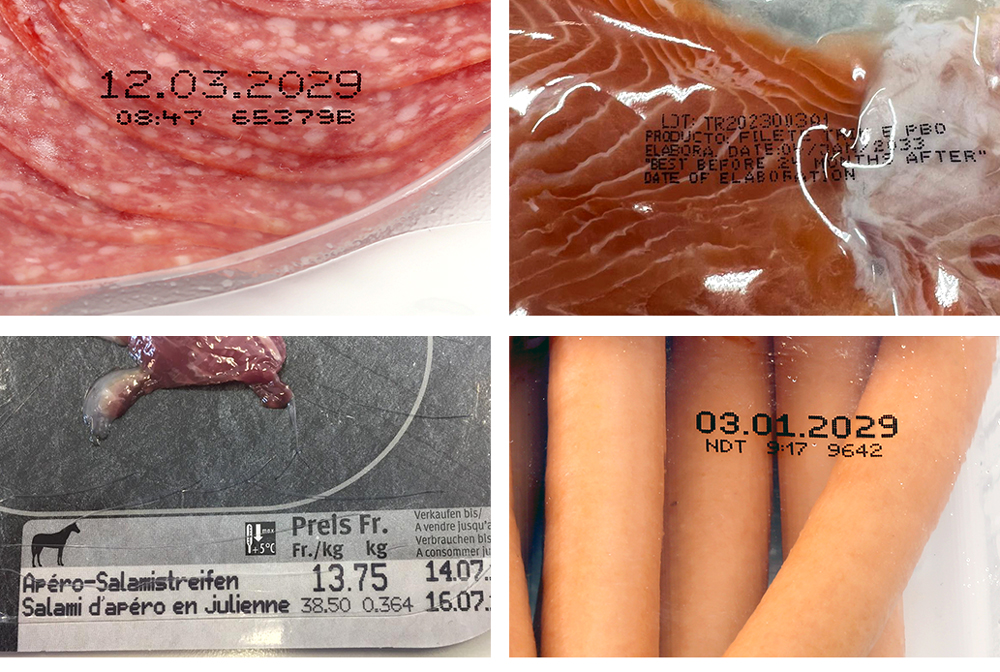
A newcomer in the world of CIJ is the LEIBINGER IQJET marking system
The IQJET combines the advantages of Continuous Inkjet (CIJ) systems with additional innovative technology and economic targets.
Most CIJ printers need to be regularly cleaned, frequently before every operation, meaning the production line has to be stopped during this period. But not so with LEIBINGER printers. Unique on the market, the innovative nozzle seal technology in the IQJET makes cleaning superfluous as the ink is sealed within a totally air-tight circuit during printing intervals. No ink clogging or drying up, no cleaning and no expensive downtime make the working day easier. The printer starts running immediately after being turned on again. Independent of ambient conditions and to ensure a consistently high printing quality, the IQJET constantly regulates the ink temperature and viscosity.
The automatic sealing of the ink circulation system also has a valuable knock-on effect in that during intervals between printing sessions no solvents are used. Vaporised solvents are recovered and returned to the system. At lower emissions, the IQJET has an up to 50% lower consumption rate than conventional rival systems.
For example: the IQJET uses 2,7 ml solvent per hour. Current competitive systems without solvent recovery use between 6 and 10 ml per hour. Calculated on the basis of a 3-shift operation working a total of 6,000 hours a year, 43,800 ml of solvent are saved year on year.
Lower operating costs
These costs tend to play a subordinate role when making investment decisions, wrongly so given that operating costs have a sizeable impact on company productivity in the long-term. Ink, solvent and energy requirements are major cost factors. The most noteworthy IQJET innovation in terms of energy consumption is the intelligent pump management system. Operating intermittently, the pumps use less power as a consequence and are also more durable. The IQJET is extremely energy efficient and on average makes do with a mere 36 watts. Due to the minimal wear and tear, the printer is maintenance-free for 5 years.
Integration into operations
LEIBINGER aims to make an impact upon integration of the IQJET into the production plant. As such, the integration process is ‘plug and print’. So what makes the IQJET simpler than other marking systems? First of all, the system provides a broad number of interfaces, including OPC UA and an integrated SPS, meaning it can be integrated into any packaging line with ease. The system is easily operated via a state-of-the-art HMI with 10-inch touch display and intuitive drag and drop operation similar to that of a smart device.
Ink and recycling
Efficient and sustainable production also encompasses the consumables, in this case the ink and cartridges. CIJ inks used within the meat industry that come into direct or indirect contact with food require specific certifications and may only be composed of selected ingredients. Of primary note in this respect are the FDA (Food and Drug Administration), EU Regulation (EC) No.1935/2004 and Swiss Ordinance 817.023.21 on food contact materials and articles. These three regulate the safety standards pertaining to the use of inks on food packaging. The LEIBINGER portfolio encompasses a broad range of inks to suit almost every material and application. Handling and ink adhesion under the specific ambient conditions within the meat industry (temperature fluctuations, humidity, sterilisation and cleaning/disinfection processes) are also taken into account during selection of the ink. An ink recommendation is always customer-specific and coordinated to the selected CIJ coding & marking system.
To the last drop
Completely using up cartridges to consequently reduce consumption should be a matter of course, but it’s not. Coding & marking systems frequently require new cartridges even when those installed are still 10% full. An avoidable waste that negatively impacts on both the environment and your pocket. As such, the recycling capability of the new IQJET represents an additional benefit as the system prints until the cartridge is totally empty. Empty cartridges can therefore be easily disposed of with plastic recycling waste. Moreover, because LEIBINGER cartridges are made of a single plastic (100% PE) they are also easily recyclable.
Lasting quality
The most sustainable products are those that have a long service life. LEIBINGER systems are manufactured exclusively at the company's production plant in Germany with the vertical range of manufacture exceeding 85%. The fact that the IQJET is maintenance-free for five years also demonstrates that all the components are designed for a long service life.
Innovative coding technology
for meat and poultry packaging
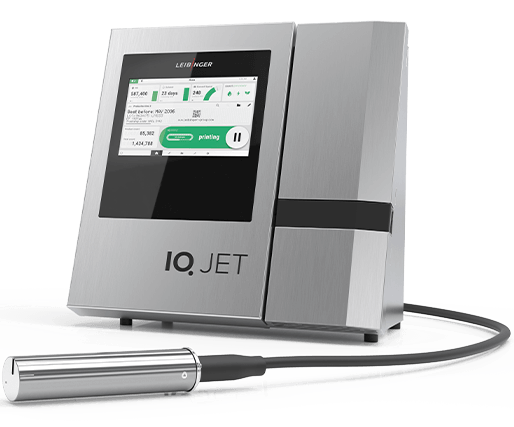
IQJET - the world's first intelligent coding system. Print variable data on meat packaging and any other material. Experience groundbreaking efficiency, effortless usability, cost-effective operation and a maintenance-free duration of five years.


